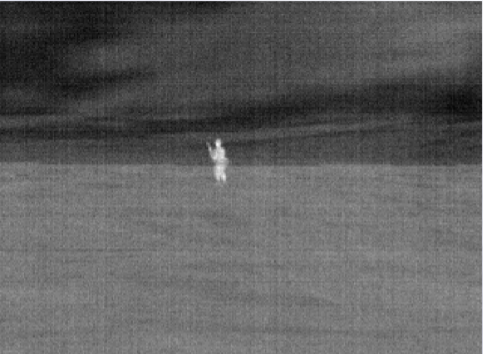The NETD is the Noise Equivalent Temperature Difference, it is the temperature difference between an object and its environment needed to generate a variation of the IR signal equal to the RMS temporal noise.



In our laboratory we test IR cameras with or without AGC (automatic gain control).
The IR camera with AGC detects the hottest and coldest temperature in the frame. The hottest and coldest temperatures are show in different color, usually hot shown in red and cold blue (might be black and white). Objects with temperature in between take on different shades or colors based on their temperature compared to the maximum and minimum temperatures. For measurements a knife-edge targets are used as a shield to block part of IR radiation. This allows to capture ambient and precisely ( \Delta T_b = 1 mK) set black body temperatures in the same frame.
In this case, the blackbody temperature is controlled using differential mode with respect to the temperature of the target (usually ambient).
NETD calculation
The mean NETD expressed in milli-kelvin is calculated as follows:
\textup{NETD} = \left | \frac{\epsilon×T_{\text{opt}}×\Delta T_0} {M_t-M_{bb}} \right | ×TN(T_0)×1000Where \epsilon – the blackbody emissivity;
T_{\text{opt}} – the collimator trasmittance;
M_t – the mean value of the pixels on the “target area ROI”;
M_{bb} – the mean value of the pixels on the “emissive area of the blackbody ROI”;
\Delta T_0 – the difference between blackbody and ambient temperature;
TN(T_0) – the temporal noise over the N frames.